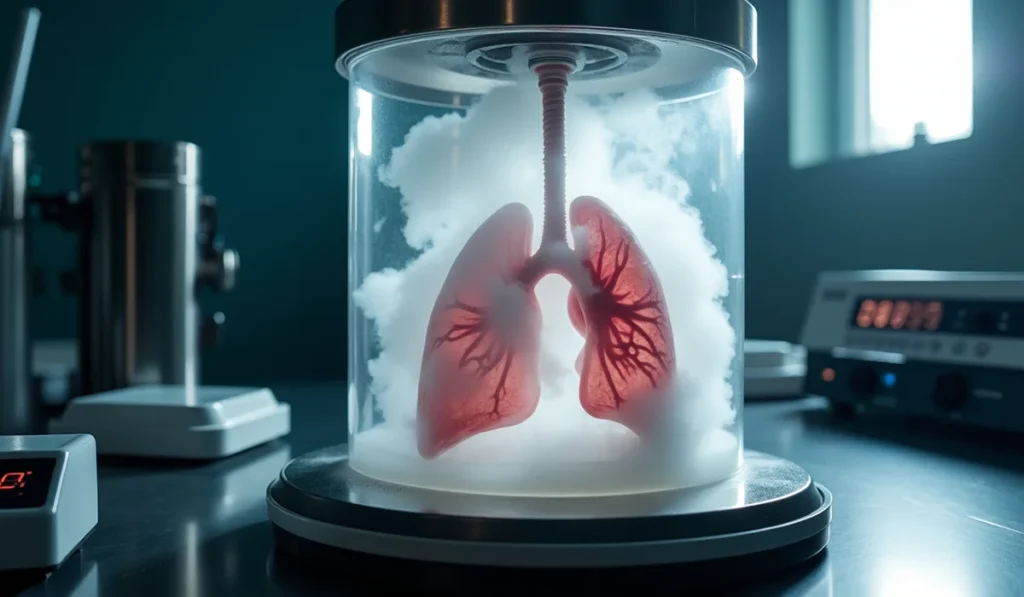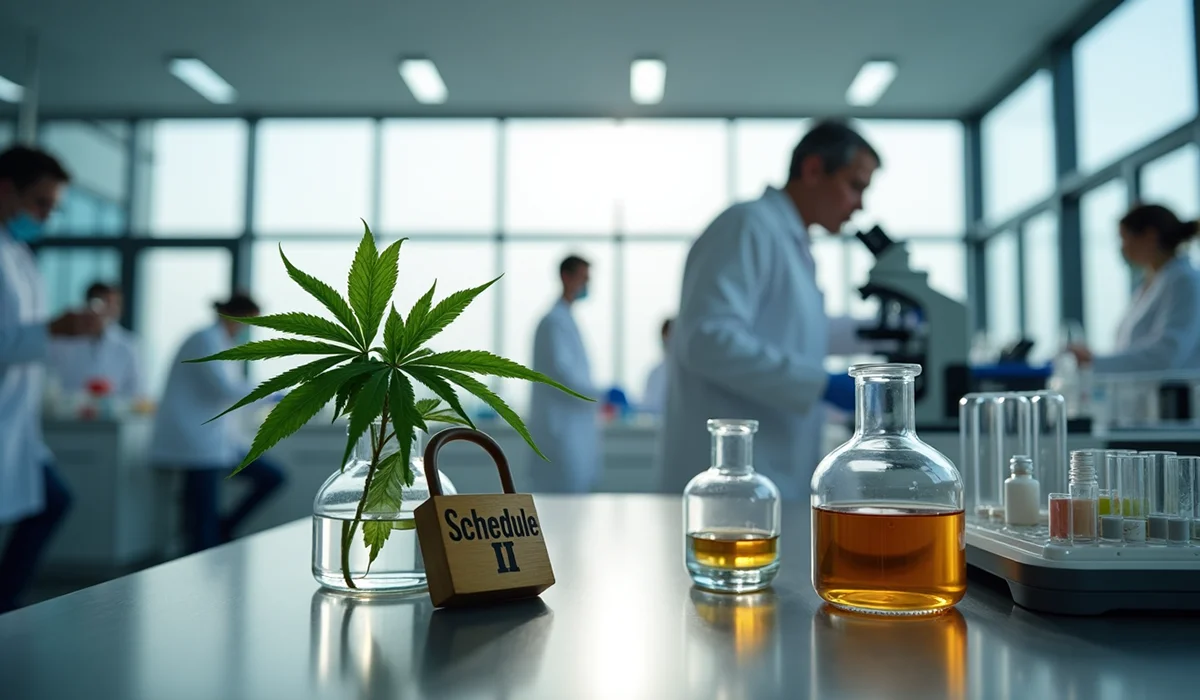THC concentrates used in dabbing can reach potency levels of 75%, while traditional cannabis smoking only contains 5-20% THC. This stark difference in THC levels raises valid concerns about lung health risks from dabbing. The latest data shows that 14.5% of U.S. adult cannabis users prefer dabbing despite growing evidence of health risks associated with high THC weed.
Dabbing poses much more serious health risks than many realize. Medical professionals have documented several cases where patients developed acute lung injuries from dabbing THC concentrates. These cases include pneumonia and respiratory failure. The process also exposes users to dangerous chemical residues, especially when you have butane hash oil (BHO) involved. Marijuana smoke contains most toxins and irritants found in tobacco smoke. These substances can lead to chronic bronchitis and permanent airway damage, highlighting the importance of understanding THC percentages and their impact on health.
This piece will delve into the latest cannabis research about dabs and their impact on lung health. You’ll learn about THC levels explained, the warning signs of lung problems, and discover safer ways to consume cannabis products.
Chemical Composition of Dabs and Lung Impact
Modern cannabis concentrates in the form of dabs pack unprecedented potency levels. Lab tests show that solvent-based dabs contain THC concentrations between 60% and 90% [1]. This is a big deal as it means that some highly refined distillates contain over 90% THC [1], far exceeding what’s considered a high THC percentage in flower.
THC Concentration Levels in Modern Dabs
Butane extraction creates concentrates with much higher potency than traditional cannabis flower. Scientific tests reveal that butane hash oil (BHO) samples typically contain 54-69% THC, and some products reach 80% concentration [2]. Tests of 57 concentrate samples showed THC levels ranging from 23.7% to 75.9% [3]. These high percentages raise questions about what does higher THC mean for users and their health.
Harmful Chemicals Released During Dabbing
Heating dabs releases several concerning compounds:
- Methacrolein – A pulmonary irritant like acrolein
- Benzene – A known carcinogen linked to leukemia
- Residual butane – From incomplete purging during extraction
- Terpene degradation products – Form at high temperatures [4]
How Dabs Damage Lung Tissue
Intense heat and concentrated compounds directly harm respiratory health. Research shows that dabbing triggers multiple mechanisms of lung damage. High-temperature vapor injures lung tissue directly, while chemical irritants cause inflammatory responses [5]. Studies also reveal that cannabis smoke changes lung macrophage function and reduces their power to fight bacterial infections [6].
Structural changes in lung tissue show this damage. Medical imaging has documented cases with ground glass opacities, diffuse centrilobular nodules, and tree-in-bud patterns in regular dabbers’ lungs [7]. These changes often result in organizing pneumonia and acute alveolar damage [7].
Common Signs of Lung Damage from Dabbing
People who dab might notice breathing problems that start small but get worse over time. Doctors have documented many cases where patients started with mild symptoms that became more serious [8].
Early Warning Respiratory Symptoms
Your lungs might show the first signs of damage from dabbing in these ways:
- A dry cough that won’t go away, with yellow or white mucus
- Getting out of breath during everyday activities
- Chest sounds like wheezing and whistling
- Pain or discomfort in your chest
- Dry cough that gets worse at night
- Breathing faster than normal [9]
Doctors who check patients find crackling sounds and wheezes in both lungs [10]. These symptoms might seem minor at first, but in spite of that, they often get worse if left untreated.
When to Seek Medical Help
You need to see a doctor right away if your symptoms become severe. Medical records show that patients who needed hospital care had oxygen levels drop to 88-90% [9]. So doctors say you should get emergency help if any of these problems develop:
X-rays of the chest show fluid buildup or cloudy areas in both lungs in serious cases [8]. Doctors look for symptoms that show up within 90 days of dabbing [11]. We tested lab samples that showed high white blood cell counts and signs of inflammation [11].
Studies show that proper medical care helps these symptoms, and many patients feel better within three days of treatment [10]. But if you keep dabbing, it can damage your lungs forever and cause long-term breathing problems.
Scientific Research on Dabbing Health Risks
Medical research has uncovered new respiratory risks linked to dabbing. Regular dab users show worrying patterns of lung damage in clinical studies, prompting further investigation into the effects of high THC percentages on health.
Latest Clinical Studies (2023-2024)
Medical researchers have found that dabbing changes lung tissue structure. Regular dab users’ brain scans reveal altered cognitive function that affects their memory and attention spans [12]. Daily cannabis users face a 34% higher risk of heart attacks [13]. These effects become more intense with concentrated forms like dabs, raising concerns about cannabis use disorder and memory impairment.
Documented Cases of Lung Injury
Several medical reports highlight severe breathing complications. A 66-year-old patient developed acute hypersensitivity pneumonitis just 24 hours after trying dabbing for the first time [10]. A 19-year-old male needed intubation for acute hypoxemic respiratory failure after deep BHO inhalation [9]. Multiple cases show common patterns:
- Bilateral pulmonary infiltrates visible on chest imaging [9]
- Ground glass opacities in lung tissue [9]
- Elevated pulmonary artery pressure in chronic users [9]
- Organizing pneumonia with acute alveolar damage [7]
Comparison with Traditional Cannabis Smoking
Lab tests show that dabbing delivers THC more effectively than traditional smoking methods. Dabbing achieves 75.5% THC recovery compared to 12-27% through conventional joint smoking [14]. This increased efficiency raises concerns about quick tolerance development and dependency risks [15]. Research shows dabbing creates fewer combustion-related toxins but produces unique chemical degradants not found in traditional smoking [16].
Prevention and Harm Reduction Strategies
You need to watch several things to minimize health risks when dabbing. The right temperature and well-maintained equipment are vital for safer use of high THC weed.
Temperature Control Methods
The right dabbing temperature will reduce harmful effects. You should aim for 450-550°F [17], not the high temperatures many people use. Low-temperature dabbing at 400-500°F gives you smoother hits and protects valuable terpenes [17]. An electronic nail will give you exact control and stop overheating [18].
Proper Equipment Maintenance
Clean equipment makes dabbing safer. You should rinse your dab rig with warm water right after each use to clean out leftover concentrates [19]. A soft, lint-free cloth works best to wipe down all parts [19]. Each week, you need to:
- Clean the nail or banger fully
- Check all gaskets and seals
- Look over percolators and diffusers [19]
Alternative Consumption Methods
E-rigs and vape pens work better than traditional dab rigs for many people [20]. These tools help control temperature and lower your chance of burns [20]. We used vape pens with diluted cannabis extracts as a milder but easier option [20]. Start with small doses to see how your body reacts [15]. Products from licensed cannabis dispensaries will give a better guarantee of strength and purity [21]. Lower THC concentrations might help cut down potential risks [22].
These safety steps often lead to better experiences with fewer side effects. Dabbing without proper care can hurt your health [23]. Good safety habits are a vital part of protecting your lungs long-term.
Conclusion
Research shows dabbing creates most important health risks to your lungs. Recent studies and clinical cases reveal that dabbing exposes users to THC concentrations up to 90%, among other harmful chemicals like methacrolein and benzene. This high potency raises questions about what’s the highest THC percentage in flower and how it compares to concentrates.
Medical findings prove that people who dab regularly face serious lung problems. These range from organizing pneumonia to acute respiratory failure. The documented cases of lung damage prove that dabbing is nowhere near as safe as traditional ways to use cannabis. Understanding THC levels explained in various products is crucial for users to make informed decisions.
You can reduce some risks by controlling temperature and maintaining your equipment properly. Better options exist for cannabis users. Electronic devices with exact temperature controls are a safer choice, though users still need to watch their dosage and how often they use. It’s important to note that even with these precautions, the high THC percentages in dabs can still pose significant health risks.
These risks are the foundations of making smart choices about cannabis use. Anyone who has ongoing coughing, trouble breathing, or chest pain needs medical help right away. New cannabis research continues to show why protecting your lungs should be your top priority when choosing how to use cannabis products.
References
[1] – https://drugfree.org/article/what-is-dabbing/
[2] – https://nida.nih.gov/sites/default/files/df-marijuana-concentrates.pdf
[3] – https://pmc.ncbi.nlm.nih.gov/articles/PMC5679763/
[5] – https://www.pulmonologyadvisor.com/features/cannabis-dabbing-lung-issues/
[6] – https://respiratory-research.biomedcentral.com/articles/10.1186/s12931-023-02399-1
[7] – https://bmcpulmmed.biomedcentral.com/articles/10.1186/s12890-024-03255-8
[9] – https://pmc.ncbi.nlm.nih.gov/articles/PMC7082782/
[10] – https://pmc.ncbi.nlm.nih.gov/articles/PMC8357011/
[11] – https://www.ccjm.org/content/88/2/77
[13] – https://www.cnn.com/2023/11/06/health/marijuana-heart-stroke-risk-wellness/index.html
[14] – https://www.sciencedirect.com/science/article/abs/pii/S0379073818308478
[15] – https://pmc.ncbi.nlm.nih.gov/articles/PMC6893129/
[16] – https://pubs.acs.org/doi/10.1021/acsomega.9b02301
[17] – https://www.leafly.com/learn/consume/dabs/best-dabbing-temperatures
[19] – https://dabx.com/blogs/news/maintenance-tips-to-keep-your-dab-rig-in-good-condition
[20] – https://www.lahacienda.com/blog/understanding-what-is-dabbing-effects-safety-and-more
[21] – https://meredith.campuswell.com/dabbing-safety/
[22] – https://www.fnha.ca/WellnessSite/WellnessDocuments/FNHA-Harm-Reduction-and-Cannabis.pdf
[23] – https://www.northwestern.edu/aodresources/harm-reduction/know-your-limit-cannabis.html





